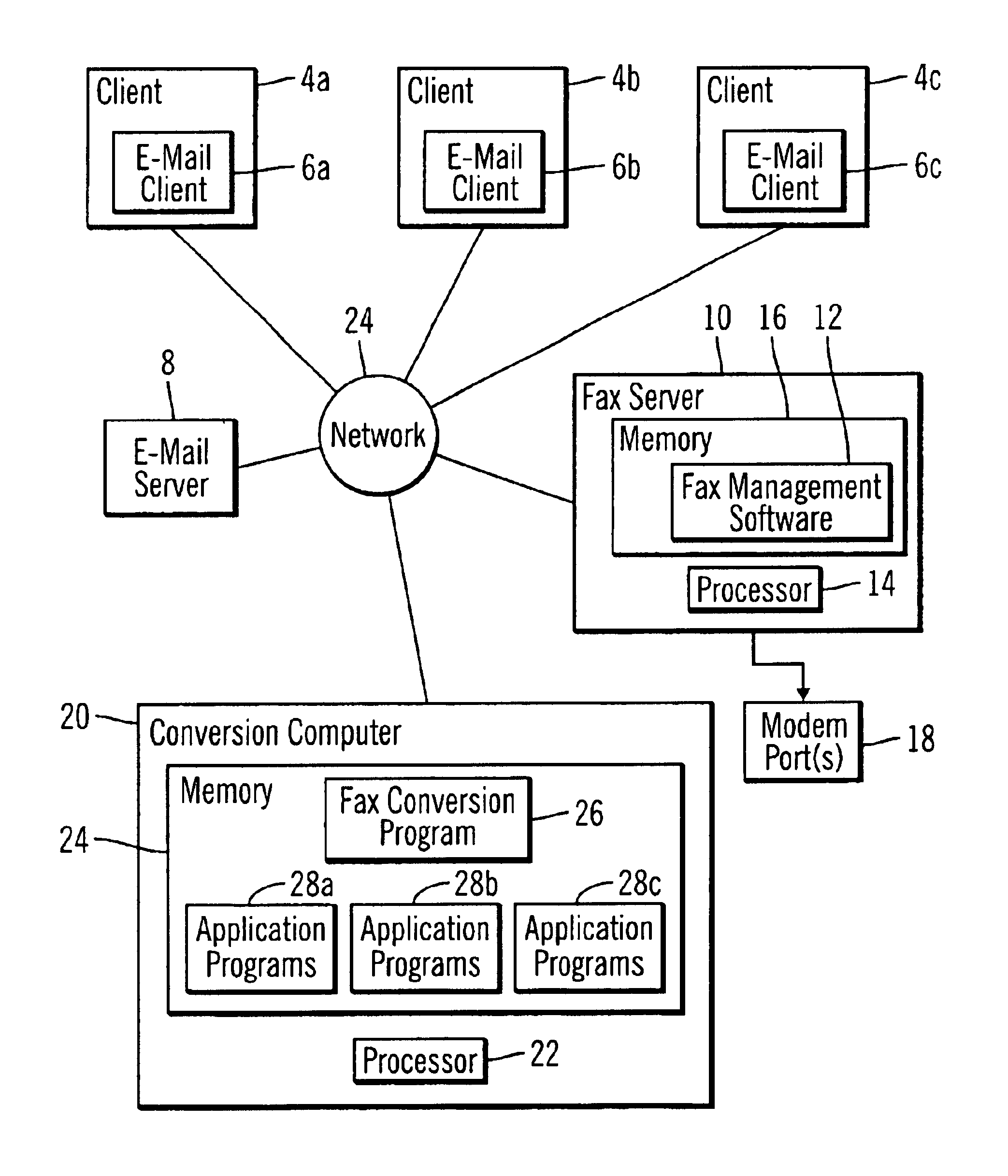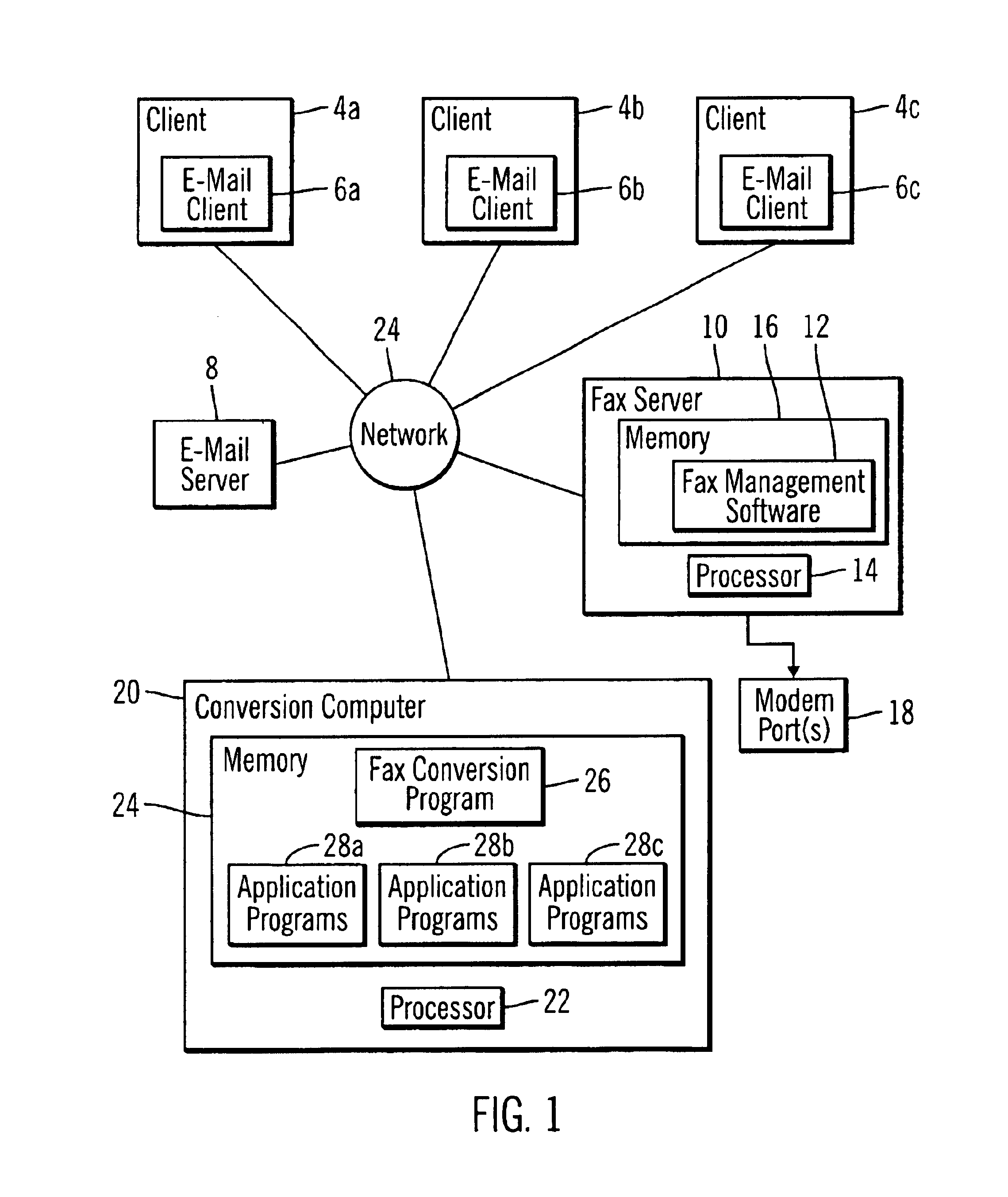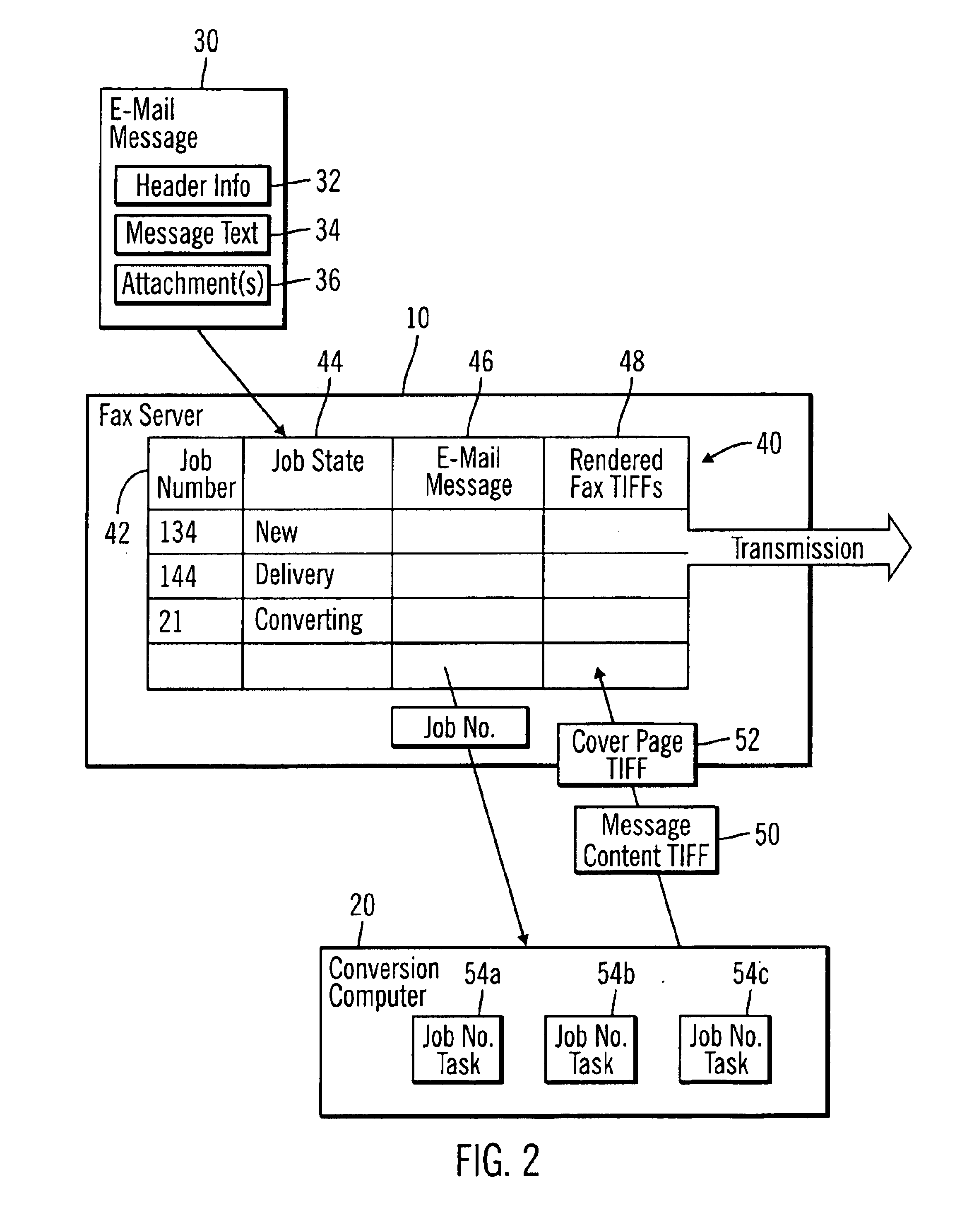Method, system and program for using application programs in multiple computers to render attachments for a fax job
a technology of application programs and fax jobs, applied in the field of method, system and program for using application programs in multiple computers to render attachments for fax jobs, can solve the problems of fax servers being limited to rendering fax documents created in server based applications, and unable to run efficiently, so as to achieve the effect of reducing the cost of fax servers and reducing the cost of server machines
- Summary
- Abstract
- Description
- Claims
- Application Information
AI Technical Summary
Benefits of technology
Problems solved by technology
Method used
Image
Examples
Embodiment Construction
To overcome the limitations in the prior art described above, preferred embodiments disclose a method, system, and program for processing a message in a network computing system including a facsimile transmission comprised of a recipient contact address, such as a phone number, e-mail address, etc., and one or more attached files. Facsimile transmissions are managed as fax jobs in a fax management system. For each attachment file in the fax job, the fax management system determines a network address of a computer including an application program capable of converting the attachment file to at least one image in a file format. Different computers at different network addresses are capable of converting different attachment file types to at least one image in the file format. The fax management system transmits the attachment file to the computer at the determined network address and the computer receiving the attachment file executes one application program to convert the attachment ...
PUM
 Login to View More
Login to View More Abstract
Description
Claims
Application Information
 Login to View More
Login to View More - R&D
- Intellectual Property
- Life Sciences
- Materials
- Tech Scout
- Unparalleled Data Quality
- Higher Quality Content
- 60% Fewer Hallucinations
Browse by: Latest US Patents, China's latest patents, Technical Efficacy Thesaurus, Application Domain, Technology Topic, Popular Technical Reports.
© 2025 PatSnap. All rights reserved.Legal|Privacy policy|Modern Slavery Act Transparency Statement|Sitemap|About US| Contact US: help@patsnap.com



